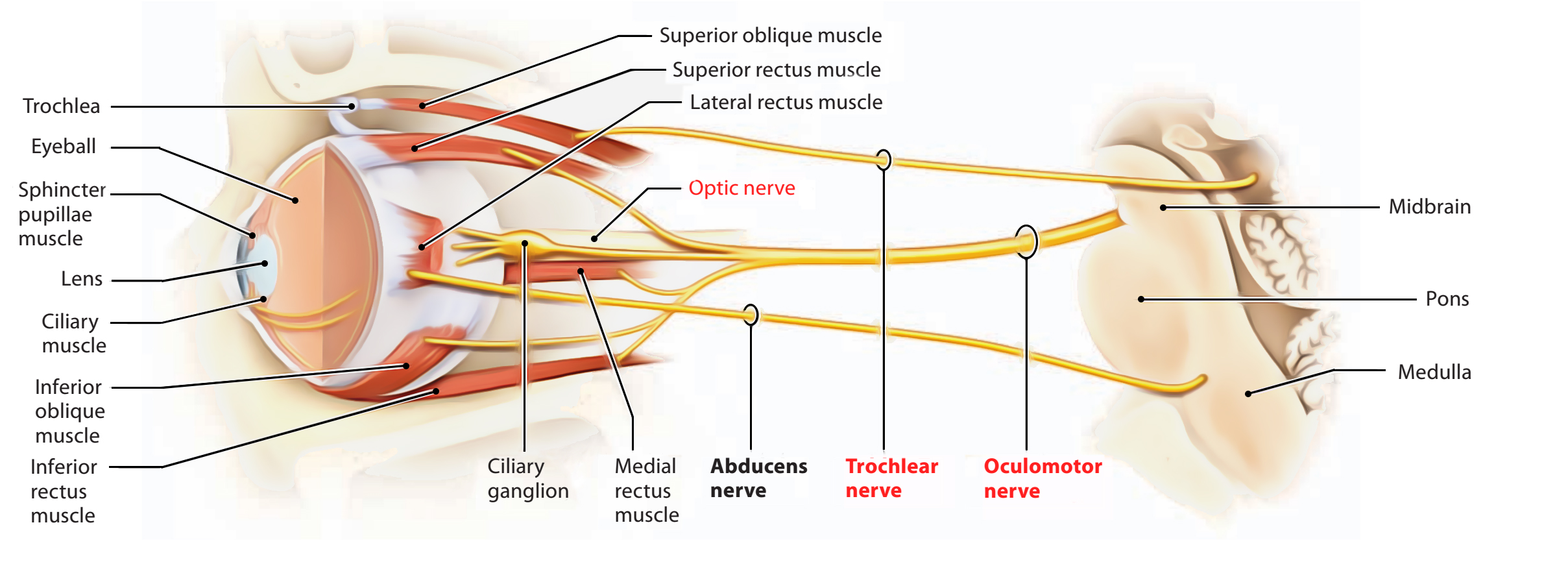You can’t separate strain in one part of your body from strain in your whole being. But sourcing mobility and ease in one place will spread throughout the whole!

Welcome to my journey through the 12 cranial nerves. September is all about the third cranial or “oculomotor” nerve which controls most of the possible motions of your eye can make. In the illustration above, the oculomotor nerve is the thickest one, and you can see that it branches into 4 separate nerves for 4 different muscles. Last week’s post covered this and offers a video with a 4 step exercise.
I find that for many of my students and mentees, there are two elements of “sight.” One of them we have minimal choice about, and the other we have lots of choice about:
-
- 1. What we see: you can choose where you look, but not what is present. What’s there is there. Even if you didn’t watch the news this past Saturday, we all know it was the anniversary of 9/11.
- 2. How we see: the quality of your sight is affected by your nervous system: what state of balance it is in, what kind of energy is flowing through it, and where that energy is flowing towards.
If you didn’t get a chance last week, you can experiment with the motions it creates by watching the video, which I got some great feedback about. A well known Alexander teacher wrote me: “Yes, yes, yes! Thank you so much for this gift! My eyes were so tired after teaching on zoom for a year, and my neck was tight, I had totally lost all kinesthetic awareness!”
Basically, because of straining to see, she lost the feeling sense of her body. Can you relate? Not feeling your body has a disorienting and anxiety producing effect. We know we are anxious, but we don’t know why.
Don’t worry. You can get your feeling back pretty easily. It is a bit shocking, if you slow down and take some time to explore, to discover that visual strain is not just in the eyes. It affects your entire musculature.
The good news is, with some mindful experimenting and practice, you can change the habitual strain. Your nervous system is designed to do – and to un-do. Try this experiment (It’s different than the video – shorter and simpler):
- 1. Squeeze or squint your eyes (with them open or closed) just a little bit. (I don’t want you to harm your delicate eye by squeezing too hard.)
- 2. Open your awareness to your whole body. Is it just your eyes that are squinting? I find I can feel it all the way down to my feet!
- 3. Don’t try to relax your eyes completely. Just undo 5% of the squint. How does the rest of your body respond?
- 4. Keep undoing the squint by small 1 – 5% increments. Little by little, you may find your whole body un-squinting! Stop whenever you feel satisfied :-).
I notice that my lower back, neck, legs, and even my breathing are all affected by this tiny action. I practiced the exercise at least once a day, every day this week. By Friday I found myself much more able to prevent visual strain before it got a chance to take hold, even when working on the computer all day long.
Imagine what it’s like to be able to undo this kind of strain within each nerve pathway! It’s paradoxical that by exploring each separate nerve, we can find more harmony within our whole body. But that’s how it is! I can do it when I’m sitting on the subway, watching TV, or even when I go for my run. Want to get some expert guidance? Below are all the ways that you can connect with me.
(P.S. If you want to get a super low-cost introduction to my Cranial Nerve Sequencing work, I’ll be leading special workshop to benefit the Judith Leibowitz Scholarship Fund, which pays 50% of tuition costs for black, indigenous, and people of color to train as Alexander Technique teachers. You can go HERE to find out more and sign up.)

